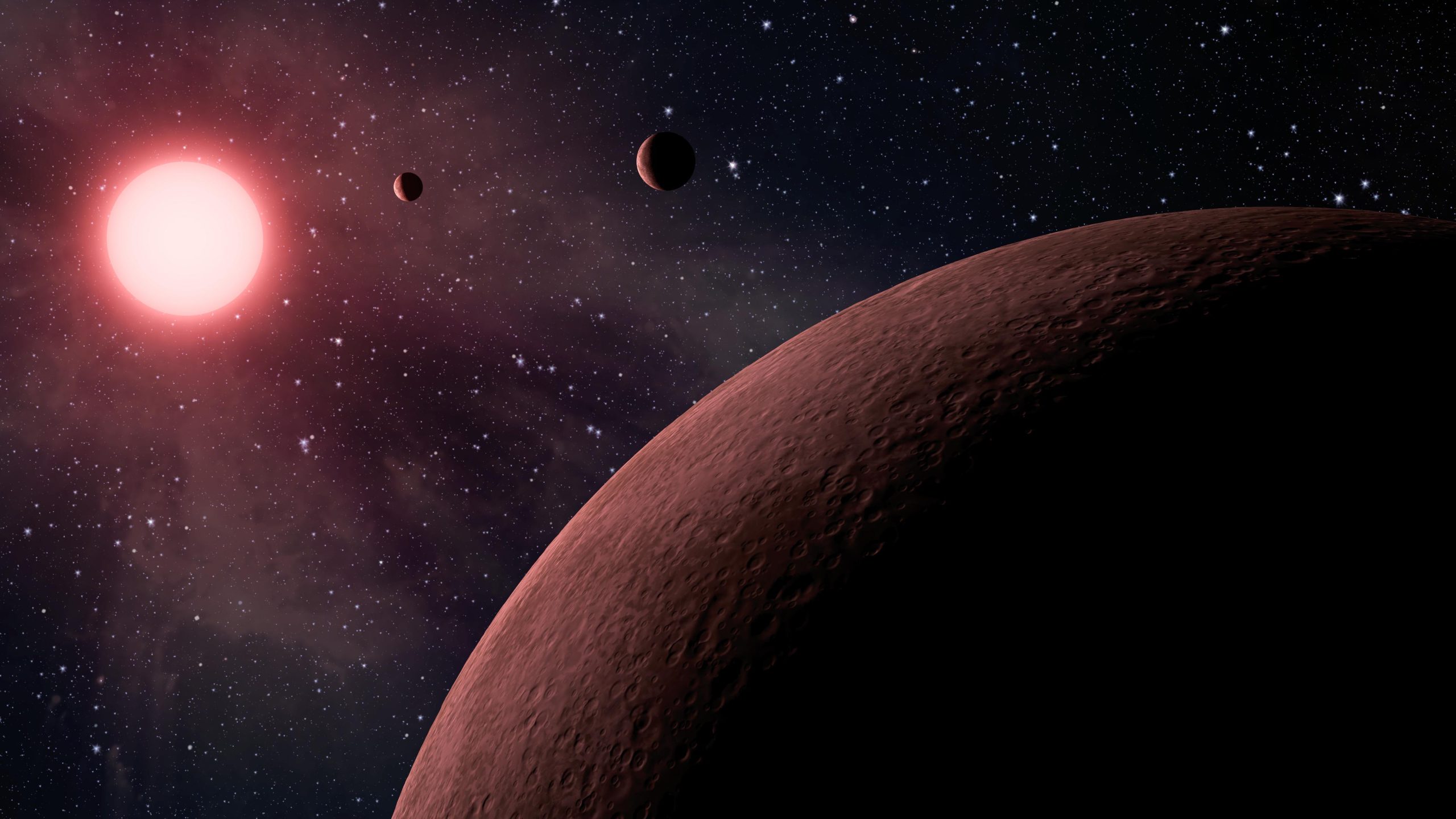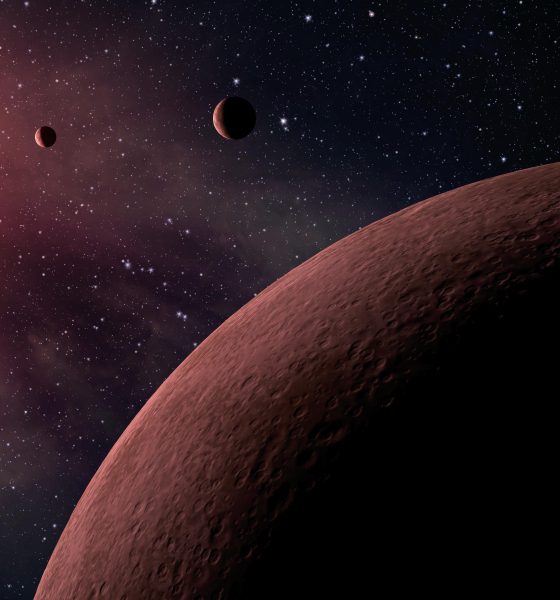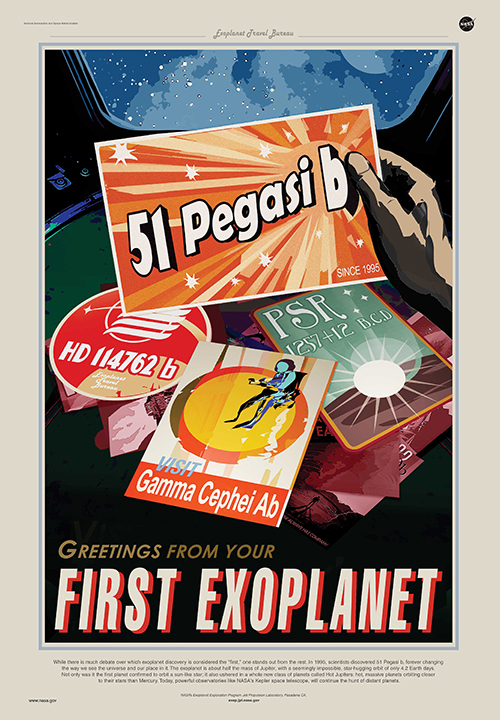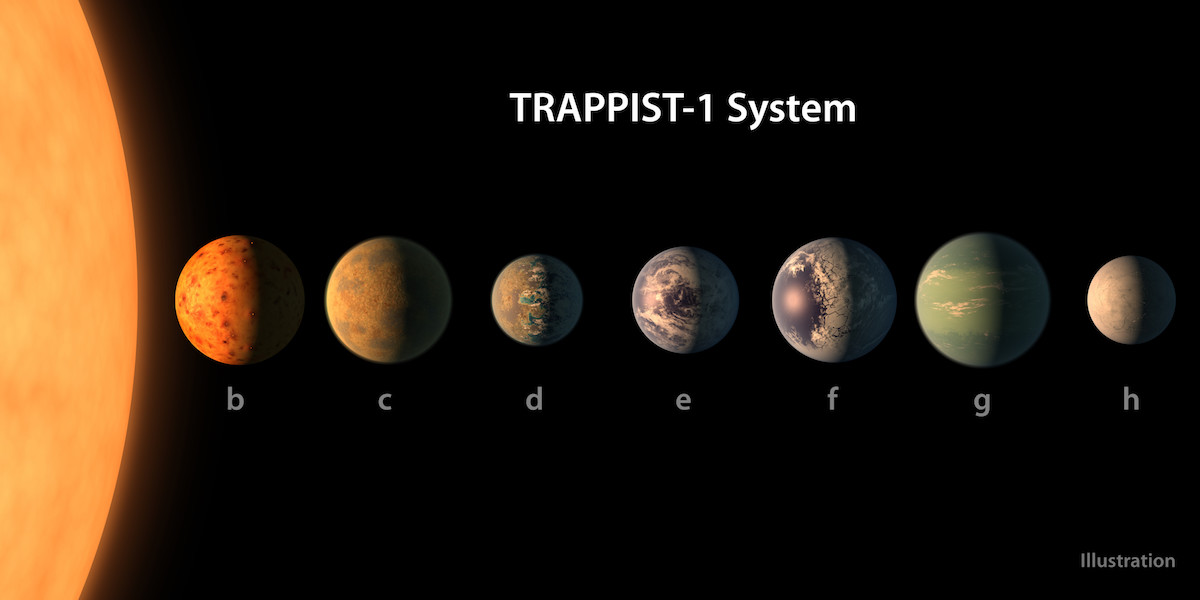

News
Feasibility study suggests use of high-power lasers to contact alien civilizations
We currently have, or could quickly develop, the technology to communicate with nearby alien worlds, according to a study recently published by the Astrophysical Journal. To accomplish such a feat, the study proposes using a 2-megawatt laser, pointed through a 30-meter telescope, to build a beacon with significant enough reach to be detected by civilizations up to thousands of light years away. With over 3,800 exoplanets already confirmed and around 3,000 others awaiting confirmation, communicating with those thought to be habitable is one of the next questions to consider.
If intelligent life were to exist on one of the planets surrounding our nearest stars, messages could potentially be sent between worlds using such a laser beacon in patterns similar to Morse code. A few years between messages might seem stark compared to the rate of exchange we’ve become used to amongst ourselves, and the wait for a first response might be daunting. However, the definitive revelation of not being alone in the universe might be worth the time invested.

In the study conducted at the Massachusettes Institute of Technology, author James R. Clark suggested that the beacon’s initial role would be to attract the attention of alien astronomers similar to how our attention is gained in identifying exoplanets. We study anomalies in the electromagnetic spectrums of other stars to find planets, and thus, our star’s spectrum would potentially seem unusual with a projecting laser beam, meriting more attention.
Clark noted that it would take a minimum of 2MW of energy to stand out against our sun’s infrared signal in a “cursory survey by an extraterrestrial intelligence”, which is how the size and wattage of the beacon were calculated. The feasibility of creating this communication tool was explored as part of a graduate school class Clark was enrolled in, and the study’s co-author is his professor, Kerri Cahoy.
Are there potentially habitable planets close enough to even justify utilizing such a technology? Perhaps. One of the better candidates could be the TRAPPIST-1 planetary system in the constellation Aquarius, where a star boasts at least 7 planets in orbit with rocky surfaces and sizes similar to Earth and Venus. Three have been determined to be potentially habitable.

The 40-light-year distance of the TRAPPIST-1 system from Earth would have a significant communications delay, however. At only 4 light years away, though, the exoplanet Proxima Centauri b, a slightly larger than Earth planet orbiting red dwarf star Proxima Centauri, could be a more promising candidate for finding alien pen pals.
Recent studies have pointed to hopeful prospects for its habitability, thus making a communication tool like the beacon in this study even more relevant. Further discussion would be needed, of course – do we want to reach out to other worlds? But the combination of a potentially habitable planet and the ability to communicate with it is an exciting consideration.
Watch the NASA video below for more information about the TRAPPIST-1 system.

Elon Musk
Elon Musk’s xAI gains first access to Saudi supercluster with 600k Nvidia GPUs
The facility will deploy roughly 600,000 Nvidia GPUs, making it one of the world’s most notable superclusters.

A Saudi-backed developer is moving forward with one of the world’s largest AI data centers, and Elon Musk’s xAI will be its first customer. The project, unveiled at the U.S.–Saudi Investment Forum in Washington, D.C., is being built by Humain, a company supported by Saudi Arabia’s Public Investment Fund.
The facility will deploy roughly 600,000 Nvidia GPUs, making it one of the world’s most notable superclusters.
xAI secures priority access
Nvidia CEO Jensen Huang stated that the planned data center marks a major leap not just for the region but for the global AI ecosystem as a whole. Huang joked about the sheer capacity of the build, emphasizing how unusual it is for a startup to receive infrastructure of such magnitude. The facility is designed to deliver 500 megawatts of Nvidia GPU power, placing it among the world’s largest AI-focused installations, as noted in a Benzinga report.
“We worked together to get this company started and off the ground and just got an incredible customer with Elon. Could you imagine a startup company, approximately $0 billion in revenues, now going to build a data center for Elon? 500 megawatts is gigantic. This company is off the charts right away,” Huang said.
Global Chipmakers Join Multi-Vendor Buildout To Enhance Compute Diversity
While Nvidia GPUs serve as the backbone of the first phase, Humain is preparing a diversified hardware stack. AMD will supply its Instinct MI450 accelerators, which could draw up to 1 gigawatt of power by 2030 as deployments ramp. Qualcomm will also contribute AI200 and AI250 data center processors, accounting for an additional 200 megawatts of compute capacity. Cisco will support the networking and infrastructure layer, helping knit the multi-chip architecture together.
Apart from confirming that xAI will be the upcoming supercluster’s first customer, Musk also joked about the rapid scaling needed to train increasingly large AI models. He joked that a theoretical expansion one thousand times larger of the upcoming supercluster “would be 8 bazillion, trillion dollars,” highlighting the playful exaggeration he often brings to discussions around extreme compute demand.
Elon Musk
Elon Musk debunks pay package and lip reader claims in double takedown
Musk’s quick debunks highlighted once more that X is an ideal platform for directly countering misinformation.

Elon Musk recently took to X to debunk some misinformation about his 2025 CEO performance award, as well as some comments he made during Donald Trump’s banquet in honor of Saudi Prince Mohammed bin Salman.
Musk’s quick debunks highlighted once more that X is an ideal platform for directly countering misinformation.
Musk’s pay package
Elon Musk’s 2025 CEO performance award was created as a path for him to gain a 25% stake in Tesla. It would also make him a trillionaire, provided that he manages to meet all of the performance award’s aggressive targets. This has not stopped critics from running with the apparent narrative that Musk will be getting the $1 trillion with utmost certainty, however.
This included the More Perfect Union account on X, which noted that “Elon Musk is set to make more than every U.S. elementary school teacher combined, according to the Washington Post.”
Musk responded to the pro-union amount’s post, highlighting that he has not earned any of his $2025 performance award so far. Musk also noted that those who believe he will be getting $1 trillion should invest in TSLA stock, as his compensation is tied to the company’s performance and growth. Investors who hold their TSLA until Musk achieves his full pay package would likely get notable returns.
Lip reader fail
Musk also debunked claims from the Daily Mail, which claimed that he made an “explosive” remark at Trump’s banquet for Saudi Prince Mohammed bin Salman. Citing observations from lip reader Nicola Hickling, the Mail claimed that Musk asked Pfizer CEO Albert Bourla, “What is your opinion, is he a terrorist?” The publication also posted a video of Musk allegedly making the risqué comment on X.
Musk proceeded to correct the publication, stating that the lip reader’s observations were fake. Instead of asking the Pfizer CEO if the Saudi Prince was a terrorist, Musk noted that he was asking the executive about cancer medicine. “False, I was asking about upcoming cancer drugs,” Musk wrote in a response on X.
Musk’s comments resulted in numerous critical responses to the Mail’s video, with some X users joking that the lip reader who analyzed the clip should probably get a visual acuity test, or a better training course on lip reading at least.
News
Tesla Diner to transition to full-service restaurant as Chef heads for new venture
“I am leaving the Tesla Diner project to focus on the opening of Mish, my long-desired Jewish deli. Projects like Mish and the Tesla Diner require a sharpness of focus and attention, and my focus and attention is now squarely on Mish.”

Tesla Diner, the all-in-one Supercharging and dining experience located in Los Angeles, will transition to a full-service restaurant in January, staff said, as Chef Eric Greenspan said he would take on a new project.
A report from the Los Angeles Times says Greenspan confirmed through a text that he would leave the Diner and focus on the opening of his new Jewish deli, Mish.
Greenspan confirmed to the paper:
“I am leaving the Tesla Diner project to focus on the opening of Mish, my long-desired Jewish deli. Projects like Mish and the Tesla Diner require a sharpness of focus and attention, and my focus and attention is now squarely on Mish.”
Greenspan took on the job at the Tesla Diner and curated the menu back in March, focusing on locally-sourced ingredients and items that would play on various company products, like Cybertruck-shaped boxes that hold burgers.
Tesla Cybertruck leftovers are the main course at the Supercharger Diner
The Tesla Diner has operated as somewhat of a self-serve establishment, where Tesla owners can order directly from their vehicles through the center touchscreen. It was not exclusive to Tesla owners. Guests could also enter and order at a counter, and pick up their food, before sitting at a booth or table.
However, the report indicates Tesla is planning to push it toward a sit-down restaurant, full of waiters, waitresses, and servers, all of which will come to a table after you are seated, take your order, and serve your food.
It will be more of a full-featured restaurant experience moving forward, which is an interesting move from the company, but it also sounds as if it could be testing for an expansion.
We know that Tesla is already considering expanding locations, as it will be heading to new areas of the country. CEO Elon Musk has said that Tesla will be considering locations in Palo Alto near the company’s Engineering HQ, and in Austin, where its HQ and Gigafactory Texas are located.
Musk said that the Diner has been very successful in its first few months of operation.








